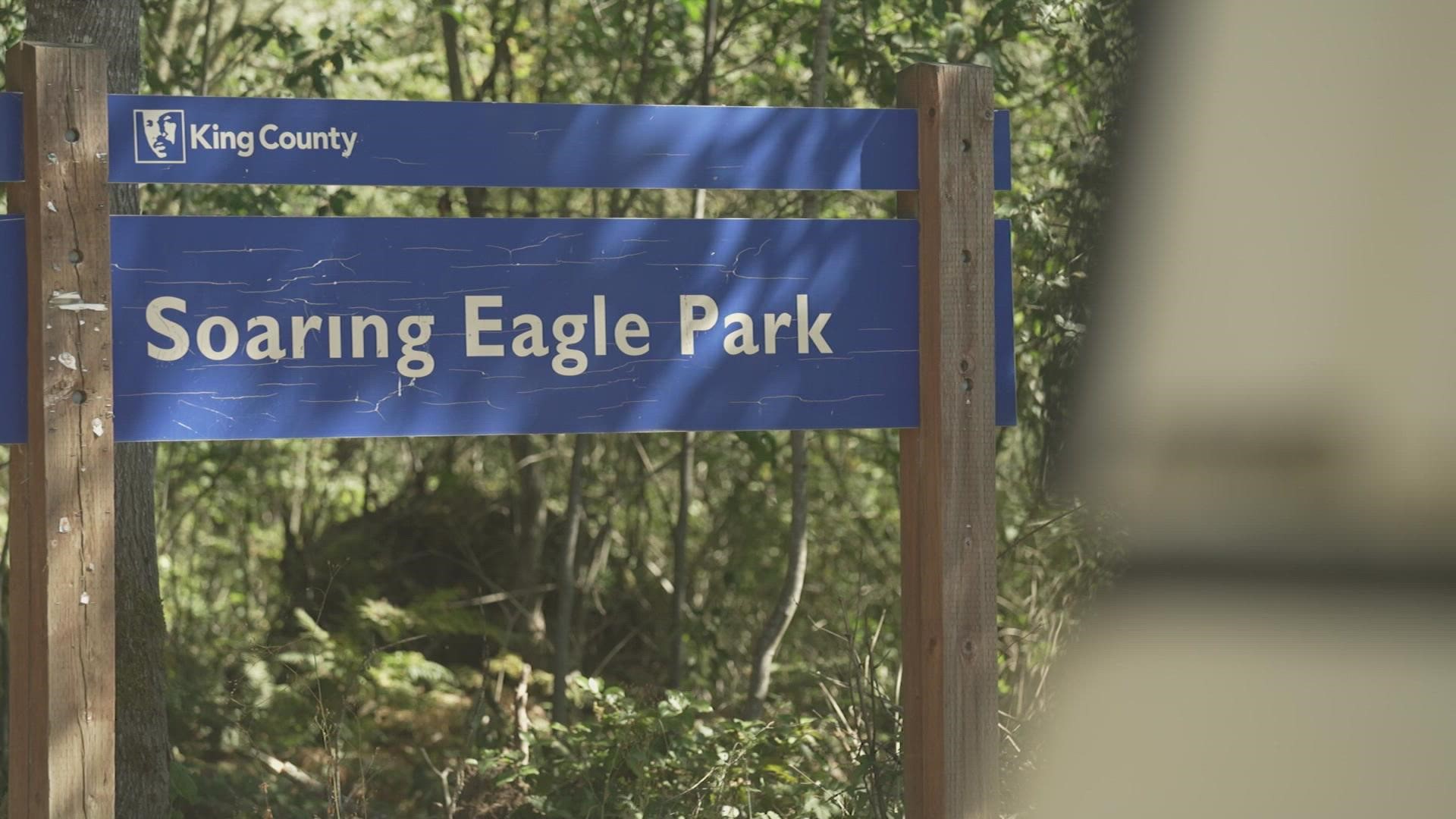SEATTLE — Kara Stender runs through Soaring Eagle Park in Sammamish all the time. Last week, as she was running through the trail, Blue Jay Way, it wasn't a Blue Jay she encountered.
"I usually go with my neighbor but on this particular morning I was alone," said Stender who has been training for a half marathon. She was running around 6:30 in the morning.
"Out of the corner of my eye I saw in an instant a flash of large wings," said Stender who was only three-fourths of the way into her four-mile loop. "Right after that, I felt talons on my head and I was so scared. It was like a little talon hug on my head."
The talons belonged to a dive-bombing owl. Stender stuck to her training and continued to run. Eventually, it flew off.
"I think it was more of a warning to scare me," said Stender.
"It's not unusual to have this happen in different parts of the Puget Sound," said Suzanne West who is the Executive Director at Sarvey Wildlife. She said owls, like most wildlife, can be territorial.
"It's usually a barred owl or sometimes great horned owls. They're very protective of their young," said West.
The Washington Department of Fish and Wildlife also believes it was one of those two owl species. The days getting shorter in fall or mating and nesting in Spring is when this behavior is most commonly seen.
"The dawn to dusk time that these animals are more active is also a time where we're a little more active because for us here it doesn't get dark until 10 o'clock," said West.
Owl attacks are considered rare by Fish and Wildlife. Biologists with the department say that birds will hoot at you before attacking and if you hear them hooting, it's best to be aware and move away from their territory.
"Animals that are fledging, so birds. That means they're living on the ground and they're living up in the lower limbs of trees. It means that they're learning to fly," said West.
Parents are most territorial in the three to four weeks after their eggs hatch. It's recommended to stay away from the area until the birds are able to fly.
That won't be a problem for Stender.
"The race ended so I'm taking a break now for a while," she said, though she does plan to get back out on the trail soon.
The Department of Fish and Wildlife says ideally you shouldn't walk near a nesting owl, but if you do, wave your hands slowly over your head. You can also wear a hat or helmet, even an umbrella will help.

